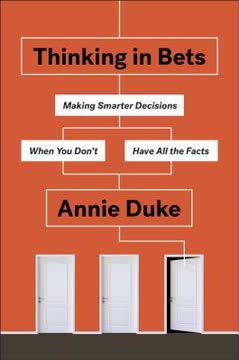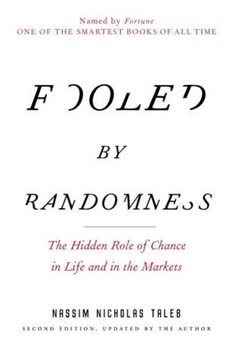重点摘要
1. 风险管理是投资管理的本质
“投资管理的本质在于风险的管理,而非收益的管理。”
基本前提。 风险管理不仅仅是一种防御策略;它是成功投资的核心。通过专注于管理下行风险,投资者可以保护其资本基础,这对长期财富积累至关重要。
关键原则:
- 关注损失,收益自会随之而来
- 小损失总比大损失好
- 不要预测;对市场波动保持中立
有效的风险管理使投资者能够采取更为审慎的风险,从而可能在长期内获得更高的回报。这种方法与本杰明·格雷厄姆的“安全边际”概念相一致,强调在寻求增长机会的同时保护资本。
2. 几何平均收益,而非算术平均,决定财富
“你的原始线性收益是谎言;你的真实收益是弯曲的。”
复利效应。 几何平均收益考虑了收益随时间的乘法特性,是财富积累的真正决定因素。与可能产生误导的算术平均不同,几何平均反映了投资的实际增长率。
关键概念:
- 复合年增长率(CAGR)基于几何平均
- 算术平均在波动市场中高估了实际收益
- 对数收益提供了更准确的财富增长图景
理解算术收益与几何收益之间的差异对于评估投资表现和做出明智决策至关重要。投资者应专注于最大化几何平均收益的策略,即使这意味着接受较低的算术平均。
3. 安全避风港应具成本效益,既提升财富又降低风险
“成本效益的风险管理可以并且应该被视为随着时间推移对投资组合的增益——前提是采取正确的风险管理。”
积极的净效应。 有效的安全避风港不仅应保护下行风险,还应对整体投资组合表现产生积极贡献。这挑战了风险管理总是以降低收益为代价的传统观念。
成本效益安全避风港的特征:
- 提高投资组合的几何平均收益
- 在市场下跌时提供保护
- 相对于其保护效益成本低
目标是找到提供积极净投资组合效应的安全避风港策略,即其几何效应(对损失的保护)超过其算术成本(平均收益的减少)。这种方法使投资者能够同时降低风险并增加长期财富。
4. 彼得堡商人交易:保险对双方均可盈利
“保险合同的授予对商人和保险公司而言都是一种收益(以他们自己的框架衡量)——这是一种双赢的互利安排。”
反直觉的好处。 彼得堡商人交易展示了即使保险定价高于其精算价值,保险也能使被保险人和保险公司双方受益。这一概念挑战了保险交易的零和观念。
关键见解:
- 保险可以提高被保险人的几何平均收益
- 保险公司从保费的正期望值中获益
- 保险的表面成本被其保护价值所抵消
这一原则超越了传统保险,适用于金融风险管理策略。它表明,支付保护费用在经济上是合理的,即使在短期内看似昂贵,因为它对长期财富复利的影响。
5. 伯努利的对数曲线:避免在金融跌落中坠落
“利润是有限的。风险是无限的。你需要避免在伯努利瀑布中坠落!”
不对称影响。 伯努利的对数曲线说明了损失对财富的影响与收益之间的不成比例关系。这个概念对于理解投资中下行保护的重要性至关重要。
对数曲线的影响:
- 大损失需要更大的收益才能实现盈亏平衡
- 小而稳定的收益比波动收益更有效地复利
- 避免重大回撤对长期财富积累至关重要
对数曲线作为风险管理重要性的视觉提醒,强调在市场下跌期间保护资本往往比捕捉所有潜在上行更为重要。
6. 尼采的永恒回归:投资时如同你将无限次重温你的选择
“你是否渴望再次经历这一切,甚至无数次?”
存在主义的命令。 尼采的永恒回归概念应用于投资,鼓励人们做出决策时,仿佛必须永远生活在其后果中。这一视角将焦点从短期收益转向长期可持续的投资策略。
将永恒回归应用于投资:
- 考虑每个投资决策的长期影响
- 专注于你愿意无限次重复的策略
- 避免高风险、投机性投资,以免后悔
这种哲学方法鼓励投资者更仔细地思考风险,并制定能够在较长时间内自信维持的策略。它与以一种让你夜间安睡的方式进行投资的理念相一致,确保你做出了明智的选择。
7. 安全避风港前沿:爆炸性回报需要较小的配置
“一般来说,崩盘的爆炸性回报越大,防止坠落伯努利瀑布所需的安全避风港配置就越小。”
效率原则。 安全避风港前沿表明,最具成本效益的风险管理策略是在市场崩盘期间具有爆炸性回报的策略,从而允许较小的配置,降低整体投资组合成本。
高效安全避风港的特征:
- 对市场崩盘具有高凸性
- 在正常市场条件下成本低
- 能够以小额配置提供显著保护
这一概念解释了为什么像尾部风险对冲这样的策略可能比传统的多样化更有效。通过将投资组合的一小部分配置于具有爆炸性崩盘回报的资产,投资者可以在保持市场增长的同时实现显著的下行保护。
8. 多样化并非免费的午餐;它稀释了风险和收益
“多样化本质上是风险的稀释,而非风险的解决方案。”
神话揭穿。 尽管多样化常被称为“金融中唯一的免费午餐”,但它实际上伴随着显著的权衡。通过将投资分散到多个资产中,投资者可能降低特定风险,但也会稀释潜在收益。
多样化的局限性:
- 可能导致整体收益降低,以换取较低的波动性
- 在系统性市场崩盘期间可能无法提供足够的保护
- 经常导致“恶化多样化”,而非真正的风险管理
投资者应寻求更具针对性的风险管理策略,以应对特定投资组合的脆弱性,而不是仅仅依赖多样化。这可能包括将高信念投资的集中头寸与量身定制的对冲策略相结合。
9. 黄金与债券:扭曲的回报挑战安全避风港地位
“要么债券的回报曲线在时刻和十年间极其嘈杂,要么有什么东西在作用于它,使其扭曲。”
安全避风港的动态特性。 传统的安全避风港如黄金和债券在时间上表现不一致,挑战了它们作为可靠风险管理工具的地位。它们的有效性可能因经济条件和市场环境的变化而显著不同。
影响安全避风港表现的因素:
- 通货膨胀和利率环境的变化
- 货币政策和中央银行行动的转变
- 全球经济和地缘政治格局的演变
投资者应谨慎对待过于依赖任何单一资产或策略作为安全避风港。相反,他们应定期重新评估其风险管理方法的有效性,并准备适应不断变化的市场条件。
10. 投资中的反驳:从被驳斥的策略中学习
“知识通过被驳斥理论的尸体数量而进步。”
科学方法。 将反驳原则应用于投资,鼓励持续学习和改进。通过积极寻求驳斥投资理论和策略,投资者可以完善其方法,避免代价高昂的错误。
投资中反驳的好处:
- 有助于识别和消除无效策略
- 鼓励批判性思维和怀疑态度
- 促进适应不断变化的市场条件
投资者应定期测试其假设,并愿意放弃那些经不起审视的策略。这种方法将导致更强大和有效的投资方法论。
11. 爱命运:通过正确选择每一条可能的路径来爱你的命运
“爱任何命运,无论骰子如何落下,并不是放弃。不是的,这是对改变命运的召唤——不是骰子本身,而是其效果——以便我们可以宣称,‘我愿如此!’”
拥抱不确定性。 爱命运(Amor fati)应用于投资意味着设计能够在广泛潜在结果中表现良好的策略。这种方法承认市场的固有不可预测性,同时追求稳健性。
在投资中实施爱命运:
- 制定对各种市场条件具有韧性的策略
- 专注于过程而非短期结果
- 培养一种心态,将市场挑战视为机会
通过采纳这一哲学,投资者可以减少情绪压力,做出更理性的决策。它鼓励长期视角,并帮助在市场动荡期间保持纪律,最终导致更好的投资结果。
最后更新日期:
FAQ
What's "Safe Haven: Investing for Financial Storms" about?
- Purpose of the book: "Safe Haven: Investing for Financial Storms" by Mark Spitznagel explores strategies for investing in a way that mitigates risk during financial downturns while still aiming to increase wealth over time.
- Focus on risk mitigation: The book emphasizes the importance of cost-effective risk mitigation, challenging the conventional wisdom that risk mitigation necessarily comes at the expense of returns.
- Philosophical and practical approach: It combines philosophical insights, particularly from Nietzsche, with practical investment strategies to provide a comprehensive guide to safe haven investing.
Why should I read "Safe Haven: Investing for Financial Storms"?
- Unique perspective on investing: The book offers a fresh perspective on investing by focusing on risk mitigation as a means to enhance wealth, rather than just a defensive measure.
- Comprehensive framework: It provides a logical and practical framework for understanding and implementing safe haven strategies, making it valuable for both novice and experienced investors.
- Philosophical insights: The integration of philosophical concepts, such as Nietzsche's eternal return, adds depth to the discussion of investment strategies, encouraging readers to think critically about their approach to risk.
What are the key takeaways of "Safe Haven: Investing for Financial Storms"?
- Cost-effective risk mitigation: The book argues that risk mitigation should not be seen as a trade-off against wealth creation but as a strategy that can enhance returns over time.
- Importance of geometric returns: It emphasizes the significance of geometric average returns over arithmetic averages, highlighting the impact of compounding on wealth.
- Holistic investment approach: The book advocates for a holistic view of investing, where the interactions between different components of a portfolio are considered to maximize overall returns.
What is the "Petersburg Merchant Trade" concept in the book?
- Insurance analogy: The Petersburg Merchant Trade is an analogy used to explain how insurance can be a cost-effective risk mitigation strategy, even if it appears costly in the short term.
- Geometric vs. arithmetic returns: It illustrates how the geometric effect of risk mitigation can outweigh its arithmetic cost, leading to higher overall returns.
- Strategic risk management: The concept underscores the importance of strategic, rather than tactical, risk management in investing.
How does Mark Spitznagel define a "safe haven" in investing?
- Risk mitigation focus: A safe haven is defined as an investment that mitigates risk, particularly during financial downturns, while ideally enhancing wealth over time.
- Payoff characteristics: Safe havens are characterized by their payoff profiles, which should provide protection against significant losses in a portfolio.
- Variety of forms: Safe havens can take various forms, such as insurance, store-of-value assets, or alpha strategies, each with different payoff dynamics.
What is the "Safe Haven Frontier" mentioned in the book?
- Spectrum of performance: The Safe Haven Frontier represents a spectrum of safe haven payoff shapes that can provide increasing cost-effectiveness in risk mitigation.
- Cost-effectiveness line: It delineates the edge of the envelope along which safe havens can push to achieve maximum efficiency in mitigating risk.
- Strategic guidance: The frontier serves as a guide for investors to identify and implement the most cost-effective safe haven strategies.
What role does Nietzsche's philosophy play in "Safe Haven: Investing for Financial Storms"?
- Eternal return concept: Nietzsche's idea of the eternal return is used as a thought experiment to emphasize the importance of getting investment decisions right, as if they will be repeated indefinitely.
- Life affirmation: The book encourages investors to adopt a mindset of "amor fati," or love of one's fate, to embrace the outcomes of their investment decisions.
- Philosophical depth: Nietzsche's philosophy adds a layer of depth to the discussion of risk and investing, encouraging readers to think critically about their approach to financial decisions.
How does the book address the "great dilemma of risk"?
- Catch-22 of risk: The book discusses the dilemma where taking too much risk can lead to losses, while taking too little can result in missed opportunities for wealth creation.
- Solution through risk mitigation: It proposes that the solution lies in cost-effective risk mitigation, which can enhance returns while managing risk.
- Strategic approach: The book advocates for a strategic, rather than tactical, approach to risk management, focusing on long-term wealth growth.
What is the significance of geometric average returns in the book?
- Compounding impact: Geometric average returns are emphasized for their ability to reflect the true impact of compounding on wealth over time.
- More accurate measure: The book argues that geometric averages provide a more accurate measure of investment performance than arithmetic averages.
- Focus on growth rate: By focusing on the growth rate of wealth, investors can better understand the long-term effects of their investment decisions.
What are the best quotes from "Safe Haven: Investing for Financial Storms" and what do they mean?
- "Of all that is written, I love only what a person hath written with his blood." This Nietzsche quote underscores the importance of deeply understanding and committing to one's investment strategies.
- "Don't lose money." This Buffett-inspired principle highlights the critical importance of risk management in investing.
- "A ship in harbor is safe, but that is not what ships are built for." This quote encourages investors to embrace risk strategically, rather than avoiding it entirely.
How does the book differentiate between tactical and strategic investing?
- Tactical investing: Tactical investing involves making short-term predictions and adjustments to a portfolio, often requiring precise timing and forecasting.
- Strategic investing: Strategic investing focuses on long-term goals and maintaining a consistent approach to risk management, without relying on predictions.
- Emphasis on strategy: The book advocates for strategic investing as a more reliable and effective approach to managing risk and enhancing returns.
What is the "Kelly Criterion" and how is it applied in the book?
- Betting strategy: The Kelly Criterion is a formula used to determine the optimal size of a series of bets to maximize the geometric average of wealth.
- Application to investing: The book applies the Kelly Criterion to investing, suggesting that it can help investors determine the optimal allocation to safe havens.
- Balancing risk and reward: By using the Kelly Criterion, investors can balance the trade-off between risk and reward to achieve the best long-term outcomes.
评论
《安全港》收到了褒贬不一的评价,因其在风险缓解和投资哲学方面独特的视角而受到赞扬。读者们欣赏书中所涉及的数学概念以及对传统智慧的挑战。然而,也有一些人认为其写作风格较为晦涩,缺乏实用的例子。批评者指出书中缺乏具体的投资建议,而支持者则认为这是作者的有意之举,鼓励读者独立思考。这本书的复杂性引发了不同的看法,有些人觉得它发人深省,而另一些人则难以理解其概念。总体而言,它被视为一本引人深思的读物,适合那些寻求新颖投资组合管理方法的经验丰富的投资者。
Similar Books















